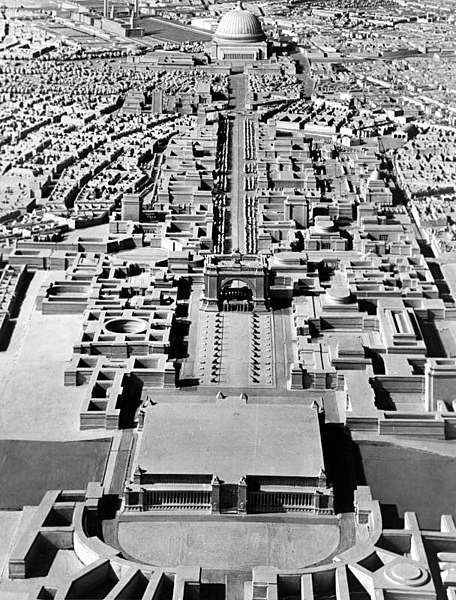Fascist architecture encompasses various stylistic trends in architecture developed by architects of fascist states, primarily in the early 20th century. Fascist architectural styles gained popularity in the late 1920s with the rise of modernism along with the ultranationalism associated with fascist governments in western Europe. Fascist styles often resemble that of ancient Rome, but can extend to modern aesthetics as well. Fascist-era buildings are frequently constructed with particular concern given to symmetry and simplicity.
The New Reich Chancellery in Berlin, Germany
Stadio dei Marmi with Palace of the Italian Olympic Committee in the background, Rome
The CSIC honouring Franco's victory in the Spanish Civil War, in Madrid, Spain
Casa della Parola (House of the Word), Arnaldo dell'Ira, 1940
Welthauptstadt Germania or World Capital Germania was the projected renewal of the German capital Berlin during the Nazi period, part of Adolf Hitler's vision for the future of Nazi Germany after the planned victory in World War II. It was to be the capital of his planned "Greater Germanic Reich". Albert Speer, the "first architect of the Third Reich", produced many of the plans for the rebuilt city in his capacity as overseer of the project, only a small portion of which was realised between the years 1938 and 1943.
Model of Adolf Hitler's plan for Berlin formulated under the direction of Albert Speer, looking north toward the Great Hall at the top of the frame
The Schwerbelastungskörper was built to determine if the unconsolidated ground could support the weight of the planned triumphal arch.
A model of Germania







